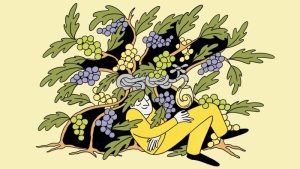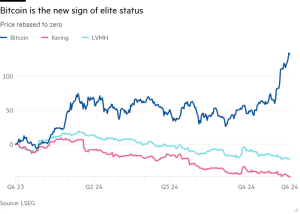Fungi deserve a natural kingdom of their own
Unlock the Editor’s Digest for free
Roula Khalaf, Editor of the FT, selects her favourite stories in this weekly newsletter.
The writer is a science commentator
The words we use to describe things can frame the way we think about them. Fungi, for example, are neither plants nor animals. This fact could be holding back their conservation.
That is because policies and legislation aimed at protecting the natural world are often written in the language of flora and fauna, terms that describe a region’s plants and animals respectively. Fungi, which constitute a separate kingdom in the classification of living things, can end up falling through the cracks.
To correct this oversight, some are now pushing for an extra f — referring to a region’s fungi — to be added to mentions of flora and fauna in biodiversity rubric. The governments of the UK and Chile will bring the so-called 3Fs proposal to the table at the COP16 international biodiversity meeting that opened in Colombia on Monday. Their “Fungal Conservation Pledge” argues for the recognition of “fungi as an independent kingdom of life in legislation, policies and agreements, in order to advance their conservation”. If successful, as it deserves to be, conventions on biological diversity will apply not just to plants and animals but to “flora, fauna and funga”.
The term “funga” has gained currency since it was coined six years ago to describe a region’s distinctive collection of fungi, which can include mushrooms, toadstools, yeasts and moulds (lichens are symbiotic partnerships of fungi and algae). The faux Latinisation is deliberately analogous to flora and fauna, seeding the idea of parity between the three kingdoms.
Such equivalence is overdue, according to Giuliana Furci, executive director of the Fungi Foundation, a non-profit organisation based in Santiago and New York that helped to craft the proposal. “Life on Earth would not exist as we know it without fungi . . . almost all land plants need fungi in and on their roots,” Furci said.
Ester Gaya, who studies their evolution at the Royal Botanic Gardens in Kew, praised fungi as “the unsung heroes, underpinning all life on Earth”, adding that she and Kew colleagues strongly backed the pledge. One can only wonder why it has taken so long for these organisms to earn a named spot on the conservation podium.
While fungi and plants appear alike, scientists realised in the 1960s that they differed enough to merit being assigned to separate kingdoms. Plants, for example, nourish themselves by creating sugars from water and carbon dioxide via photosynthesis; fungi instead release digestive enzymes out into the environment to break down available carbohydrates and proteins, before absorbing the nutrients back in.
Surprisingly, molecular evidence shows that fungi are more closely related to animals than plants. Mycologists estimate there are 2.5mn species, with less than a tenth known to science.
FT Edit
This article was featured in FT Edit, a daily selection of eight stories to inform, inspire and delight, free to read for 30 days. Explore FT Edit here ➼
Mushrooms, meanwhile, are the tiny flag-bearers of a much bigger underground world. Underneath each mushroom, in the soil, lies a network of fungal filaments called the mycelium. The biologist Merlin Sheldrake, another 3Fs supporter whose 2020 book Entangled Life brought the marvels of fungi to public attention, has likened mushrooms to apples — and the mycelium to the tree that produces them.
These underground mycelial networks can sprawl and intersect. Not all fungi bear fruit; if they do, the fruit can remain below ground. Truffles, the prized fungi that grow underground near tree roots, must be sniffed out by trained dogs.
Fungi show a spectacular diversity in size, ranging from the microscopic to the monstrous. One specimen in Oregon has grown a fungal mat on the forest floor spanning nearly 10 square kilometres. The Humongous Fungus, as it is nicknamed, is thought to be the largest single organism in the world by biomass.
Fungi are literally woven into the fabric of life on Earth; at least 500mn years ago, they allowed plants to grow on land. Today, the two kingdoms coexist in mutually beneficial partnerships, with plants providing sugars for fungi and mycelial networks returning the favour by channelling nutrients and water to plant roots. Fungi break down animal and plant debris; recycle nutrients; sequester carbon; and filter water. That is why they matter to conservation.
We, too, coexist with fungi: they grow on us and inside us; some fungal pathogens drive antimicrobial resistance. Penicillin, statins and psychedelics are cultivated from them.
And without fungi, there would be no bread, wine, cheese, beer, coffee or chocolate. For these pleasures alone, this dank kingdom, with its princelings of yeasts and moulds, must rise to take its place in the legislative sun.
#Fungi #deserve #natural #kingdom




